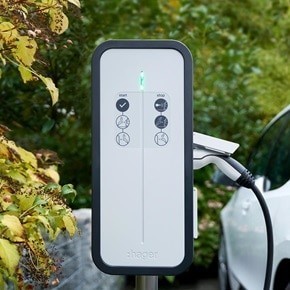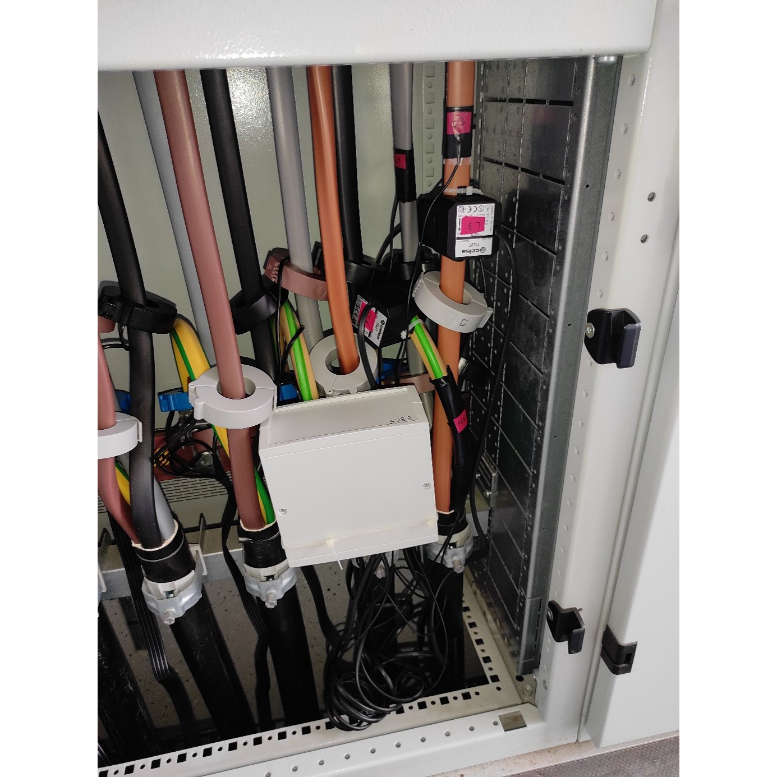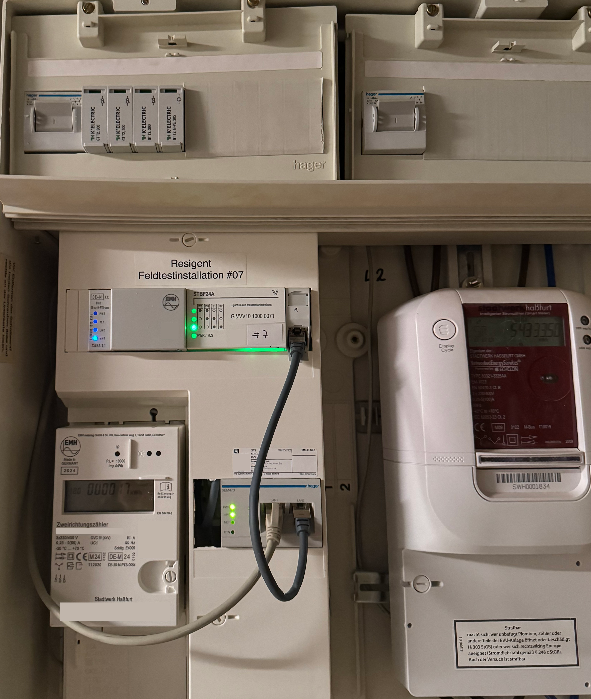AI-supported sensor system tested
RESIGENT project successfully completes trial phase
Duisburg, March 18, 2025 - To avoid overloading the power grid, an AI-based sensor system was developed in the BMWK-funded project RESIGENT, which was tested in the distribution network of the Haßfurt municipal utility in a pilot project.



Electromobility and the energy transition are having a major impact on the electricity market and grid. For example, there are more and more electric cars, which have to be charged simultaneously and flexibly for the vehicle owners. There are only a few options for controlling electricity consumption and hardly any incentives for consumers to adapt their behavior in such a way that the stability of the overall grid is maintained. Therefore, new system concepts, interfaces and market models are needed.
Tests in selected households
This is where RESIGENT comes in: To avoid overloading the power grid, three main components were developed in the project: an AI-based coordination function (KOF), a local energy management system (EMS) for households and a sensor system that is used in the distribution grid's switchgear for grid state analysis. The components were combined into an overall system that was tested in selected households. The municipal utility company of Haßfurt, as project partner and grid operator, was able to attract interested parties for the pilot test and provided parts of its grid.
KOF analyzes the power consumption based on the current measurement data from the distribution grid and from the home energy management systems. Together with other information, such as weather forecasts and load profiles, KOF predicts the load state of the grid. If there is a risk of overloading, the grid operator receives a warning and can intervene in good time.
The aim of the project is to avoid such exceptional situations by means of self-regulating mechanisms. To this end, incentives were created for the households participating in the project to shift their electricity consumption to times when demand is lower. On the one hand, KOF generates a flexible electricity price table for the following day, broken down by the hour, and makes it available to households via the EMS. On the other hand, the participants define their charging preferences in a smartphone application.
Using the information on tariffs and requirements, the EMS determines the ideal charging time and shifts the charging to nighttime, for example, instead of in the evening when many other users are charging their devices. This will make charging cheaper for end customers in the future, while also making it more transparent and easier for the grid operator to control. The system is therefore beneficial for both sides.
High security standards for data transmission
RESIGENT also took into account the special requirements for cyber security. For example, the KOF communicates with the EMS either via the MQTT standard or via an additional control box according to the EN 61850 standard with the EEBUS protocol. In both cases, this communication takes place in a secure channel via the smart meter gateway SMGW.
RESIGENT shows how digital technologies enable automatic grid control in accordance with §14a of the German Energy Industry Act.
The project was funded by the German Federal Ministry for Economic Affairs and Climate Protection (BMWi), funding reference: 01MV21018.
The project partners
Fraunhofer IMS (consortium management)
Shaping a secure and sustainable future with intelligent sensor systems: In numerous state-of-the-art research laboratories, the Fraunhofer Institute for Microelectronic Circuits and Systems IMS works with over 200 talented scientific employees and students on innovative microelectronic solutions.
The Fraunhofer IMS developed the sensor technology for the grid state analysis. This resulted in a self-sufficient sensor system that can be easily and non-invasively installed in the low-voltage distribution grid. The sensor system draws its energy for operation from an inductively coupled harvester, i.e. a device that uses magnetic fields or electric fields to generate energy and thus works wirelessly. Currents, voltages and phase angles are recorded. The data is transmitted to the grid operator via an IoT network.
University of Siegen
In the RESIGENT research project, the University of Siegen took on the challenging task of researching and implementing the coordination function (KOF). The KOF is the central element of an innovative grid control system that monitors the state of the power grid, proactively intervenes in the event of potential instability, and sends control signals to the energy management systems (EMS) of individual properties. The aim is to ensure a stable grid function even under difficult conditions.
A central component of the KOF is the bidirectional communication from the grid operator to the end customer. This architecture not only enables continuous data exchange for predictive analysis, but also provides the function of acute load shedding according to §14a of the German Energy Industry Act (EnWG).
With its work on RESIGENT, the University of Siegen is making a significant contribution to the design of a flexible, resilient and future-proof energy system that meets the requirements of the energy transition.
The initiative is developing a communication standard for networking energy-relevant devices in buildings, the power grid and market players. This supports the digitalization of the energy transition and ensures interoperability within energy-relevant systems. EEBUS enables more flexible and efficient use and distribution of energy, thus contributing to the development of new products and business models. This increases energy efficiency and supports goals such as cost optimization and grid stabilization. Coordination with standardization bodies and associations ensures the broad applicability and future-proofing of the EEBUS specifications.
Stadtwerk Haßfurt GmbH
As a local supplier and grid operator with around 14,000 customers, Stadtwerk Haßfurt GmbH enabled the validation of the developed solution in households in the supply area. Their tasks included the specification of the interfaces and framework parameters, the collection and processing of live data from the grid, and the acquisition and coordination of field test participants, drawing on their many years of experience with variable tariffs.
Hager Group
Hager Group is a leading provider of solutions and services for electrical installations in residential, industrial and commercial properties. The range of services extends from energy distribution, cable routing and security technology to intelligent building control systems, as well as charging infrastructure for e-mobility, energy storage and energy management systems. In the RESIGENT project, Hager Group developed the prototype charging infrastructure, an advanced energy management system and the associated RESIGENT field test end customer application.
VIVAVIS AG
VIVAVIS AG, headquartered in Ettlingen, Baden-Württemberg, is a leading provider of digitization solutions for critical infrastructures, particularly in the energy and water sector. With its innovative and comprehensive range of products and solutions, VIVAVIS is providing crucial support to the utilities industry in digitizing and implementing the energy transition. The company's many years of expertise, combined from various subsidiaries and national companies, are incorporated into customized solutions for grid companies, metering point operators, operators of energy-intensive industries and rail-based local and long-distance transport companies.
Overview of key topics:
- Network control technology
- Low-voltage network management + flexibility management
- Telecontrol technology + intelligent local network station
- Remote meter reading
- Smart metering + CLS management
- Control boxes